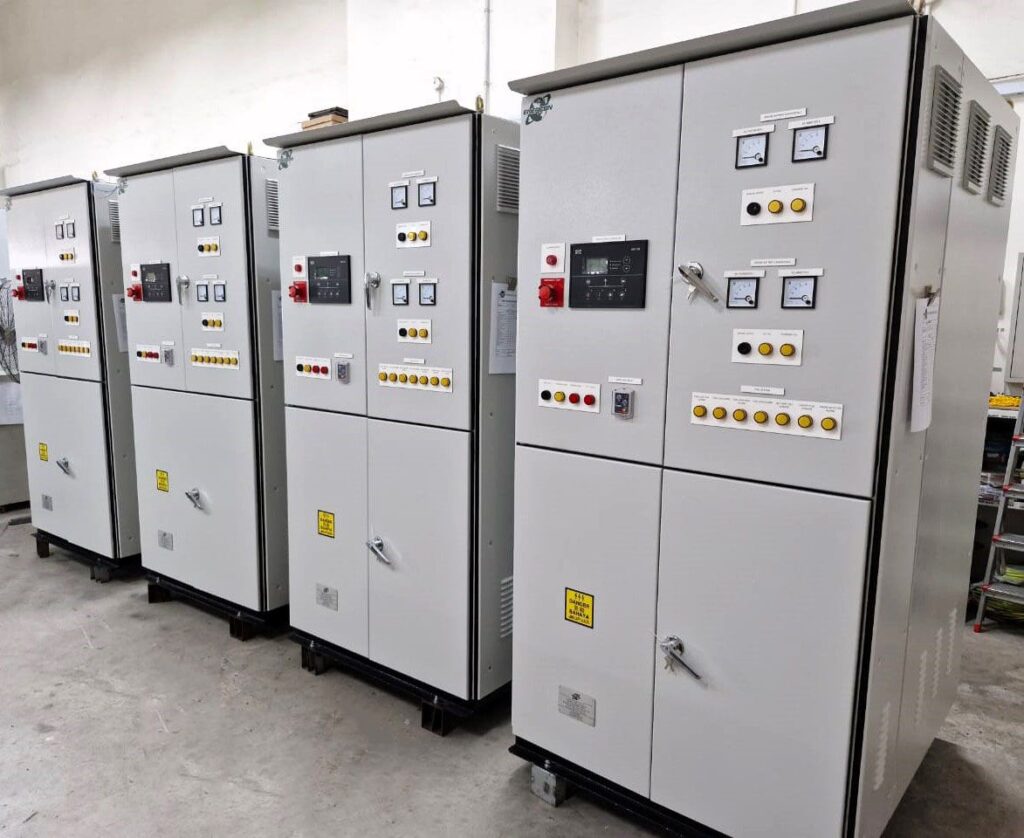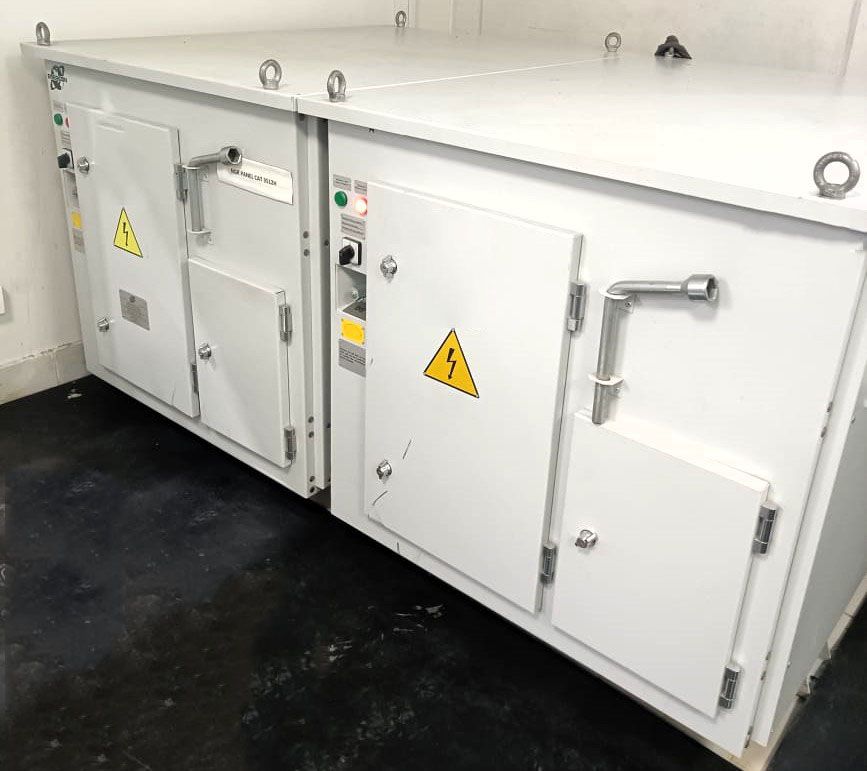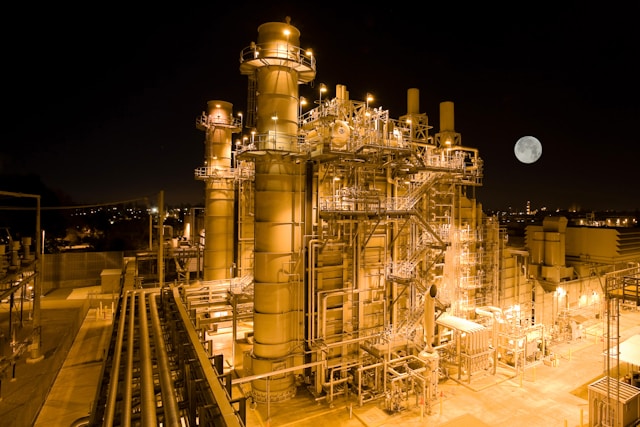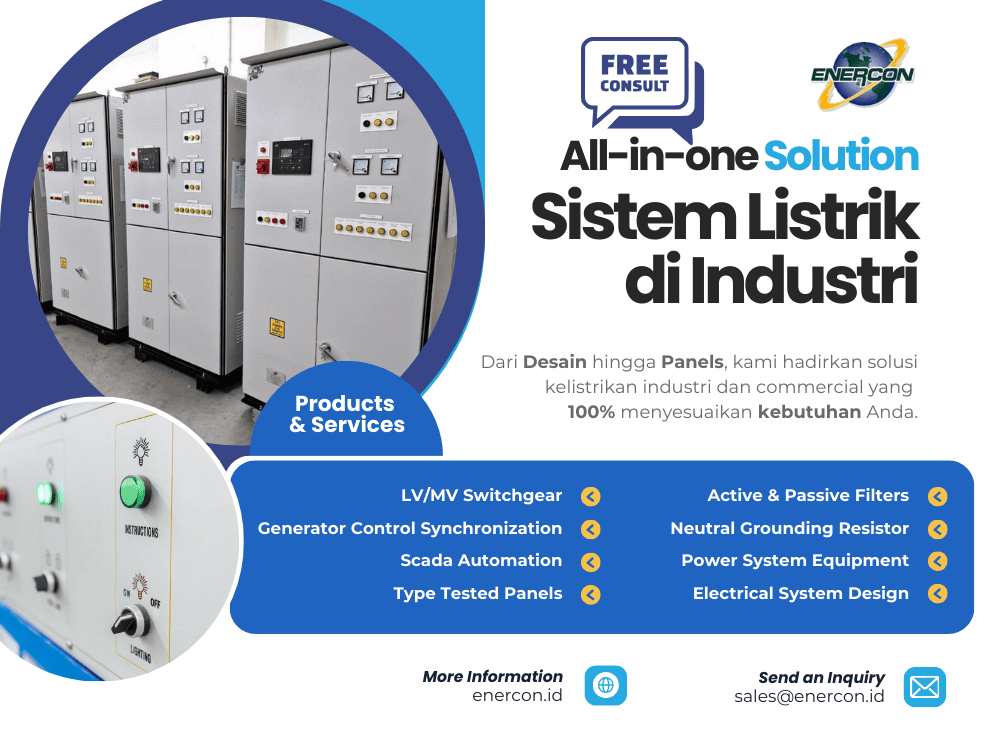A commercial building energy audit is an essential tool for facility managers, building owners, and sustainability officers aiming to optimize energy use, reduce operational costs, and meet sustainability targets. By assessing a building’s energy consumption and identifying inefficiencies, energy audits help businesses save on utility bills while contributing to environmental goals, such as reducing carbon footprints and complying with energy efficiency regulations.
In this guide, we’ll explore what a commercial energy audit entails, why it’s crucial, and provide a step-by-step approach to conducting one effectively.
What is a Commercial Energy Audit?
A commercial energy audit is a detailed evaluation of a building’s energy usage aimed at identifying inefficiencies and opportunities for improvement. It typically involves examining the building’s electrical, heating, cooling, and lighting systems to determine where energy can be conserved. The primary goal of an energy audit is to provide actionable recommendations that can lead to significant cost savings and improved energy efficiency.
Energy audits not only help cut down on operating expenses but also play a key role in sustainability initiatives, such as lowering carbon emissions and meeting industry regulations. Moreover, conducting regular energy audits helps businesses stay ahead of evolving energy efficiency standards.

Types of Commercial Energy Audits
The American Society of Heating, Refrigerating, and Air-Conditioning Engineers (ASHRAE) has established three levels of energy audits. Each level provides a different depth of analysis, depending on the needs of the building owner and the intended outcome.
Level 1: Walk-Through Audit
A Level 1 energy audit is often referred to as a “preliminary audit” or “walk-through audit.” It involves a basic assessment of a building’s energy use and typically provides a general overview of areas where energy savings are possible.
- What it entails: A visual inspection of the building’s major systems and a review of utility bills to identify obvious inefficiencies.
- When to conduct: Level 1 audits are ideal when a business wants to identify quick, low-cost energy-saving opportunities without deep analysis.
This type of audit is often the first step for building owners looking to make immediate improvements before committing to more in-depth energy studies.
Level 2: Energy Survey and Analysis
A Level 2 energy audit digs deeper into the building’s energy systems, providing a more detailed analysis of energy usage and potential savings. It includes a comprehensive energy consumption breakdown, identifies inefficiencies, and presents energy-saving measures with return on investment (ROI) calculations.
- What it entails: A thorough investigation of building systems, including the HVAC, lighting, and insulation. The audit also includes an analysis of energy usage data and identifies medium- to long-term improvement opportunities.
- When to conduct: This audit is suited for businesses looking to invest in energy-efficient upgrades that have clear payback periods.
Level 3: Investment-Grade Audit
A Level 3 energy audit is the most comprehensive and is also known as an investment-grade audit. This type of audit is typically conducted when major capital investments are being considered, such as large-scale renovations or performance contracts.
- What it entails: A deep analysis of energy use, including detailed simulations, system modeling, and financial analysis of potential energy-saving projects.
- When to conduct: Level 3 audits are recommended for large commercial buildings or industrial facilities where significant investments in energy efficiency are being considered.
How to Conduct a Commercial Building Energy Audit

Conducting an energy audit requires a systematic approach to ensure that all aspects of a building’s energy usage are thoroughly examined. Below is a step-by-step guide to help facility managers understand how to effectively conduct or manage an audit.
1. Define the Scope of the Audit
Before starting, it’s essential to define the scope of the audit. This means determining which areas of the building will be audited—whether it’s the entire facility or specific systems like HVAC, lighting, or insulation.
- Set goals: Establish the objectives of the audit, such as reducing energy costs by 10%, enhancing HVAC performance, or improving lighting efficiency.
Defining the scope helps focus efforts on the most impactful areas and ensures that the audit aligns with the organization’s energy goals.
2. Collect Energy Usage Data
Gathering historical energy usage data is critical for understanding the current energy consumption patterns. This typically involves:
- Reviewing utility bills from the past 12 to 24 months.
- Using Building Management Systems (BMS) or Energy Management Systems (EMS) to obtain real-time energy data.
- Using benchmarking tools like ENERGY STAR Portfolio Manager to compare your building’s performance against similar facilities.
This data is the foundation for identifying inefficiencies and tracking improvements post-audit.
3. Perform a Walk-Through Assessment
Next, conduct a physical inspection of the building. This walk-through assessment helps identify obvious inefficiencies that might not show up in the data, such as poor insulation or outdated lighting systems.
- Tools to use: Thermal imaging cameras for detecting heat loss, power meters for electrical load analysis, and airflow measurement devices for HVAC assessments.
A walk-through allows auditors to spot immediate areas for improvement, which can lead to quick, low-cost fixes.
4. Analyze Energy Data and Identify Opportunities
Once data is collected and the walk-through is complete, the next step is to analyze the data. This analysis will help uncover areas where energy consumption is higher than expected and provide insight into how these inefficiencies can be corrected.
- Prioritize improvements: Based on cost-effectiveness and ROI, prioritize the most significant opportunities for energy savings.
For example, upgrading lighting systems to LEDs or optimizing HVAC performance could offer high returns with relatively low investment.
5. Report Findings and Recommend Solutions
Prepare a detailed report that outlines the audit findings, highlighting inefficiencies and providing recommendations. This report should include:
- Specific upgrades (e.g., lighting retrofits, HVAC upgrades).
- Potential savings from each recommended action.
- Estimated payback periods and ROI.
6. Implement Energy-Efficiency Improvements
Finally, implement the recommended improvements, starting with the most cost-effective solutions. For larger projects, consider phasing the upgrades to align with budget constraints.
- Phased implementation: Start with quick wins, like upgrading lighting or installing smart thermostats, and plan for larger investments over time.
Read: On-Grid vs. Off-Grid Solar Systems: Which Fits Your Energy Needs?
Tools and Technologies Used in Commercial Energy Audits
To conduct an effective commercial building energy audit, using the right tools and technologies is essential. These tools help gather data, analyze energy consumption patterns, and identify opportunities for energy efficiency improvements. Let’s dive into some of the key technologies used in energy audits:
1. Energy Management Systems (EMS)
An Energy Management System (EMS) is a comprehensive software solution designed to monitor, control, and optimize the energy performance of a building in real time. EMSs collect data from various sources, including HVAC systems, lighting, and other energy-consuming equipment. By using an EMS, facility managers can track how much energy is being used and when inefficiencies occur.
How EMS works: EMS continuously monitors energy consumption across the building, provides alerts when consumption exceeds set thresholds, and enables remote control of energy systems.
Example: A facility manager notices through EMS that HVAC systems are running at full capacity outside of working hours. The system allows for remote adjustment of settings, cutting unnecessary energy use and reducing utility bills.
Benefits: EMS enables real-time energy tracking, providing data that can lead to immediate and long-term energy savings. It also allows facility managers to automate processes such as shutting down equipment during non-peak hours or adjusting lighting and temperature based on occupancy levels.
2. Thermal Imaging Cameras
Thermal imaging cameras are used to detect heat loss in a building, identifying areas where insulation is insufficient or where energy leakage may be occurring. These cameras capture infrared radiation (heat), making it easy to see temperature differences that are not visible to the naked eye.
How they help: During an energy audit, thermal imaging can reveal areas where heating or cooling systems are overcompensating due to drafts or poor insulation. This helps facility managers pinpoint areas where insulation needs to be improved to reduce heating and cooling costs.
Example: A thermal scan reveals significant heat loss through poorly insulated windows. Upgrading the insulation in these areas can significantly reduce heating and cooling demands.
Benefits: Thermal imaging cameras provide quick, visual insights into energy inefficiencies related to insulation, HVAC, and building envelope performance, which can lead to substantial improvements in a building’s energy efficiency.
3. Benchmarking Tools
Benchmarking is a method used to compare a building’s energy performance with that of similar buildings or industry standards. Tools such as ENERGY STAR Portfolio Manager allow building owners and facility managers to measure their building’s energy performance against national averages or industry benchmarks.
How it works: Benchmarking tools collect data on the building’s energy consumption and compare it with similar structures. This provides a clear understanding of whether a building is performing efficiently or if there’s room for improvement.
Example: After using a benchmarking tool, a commercial building is shown to be consuming 20% more energy than similar properties in the same region. This prompts an in-depth energy audit to find ways to reduce consumption and costs.
Benefits: Benchmarking helps building owners and managers track performance over time and identify areas where they lag behind peers, driving continuous improvement in energy management practices.
4. Software for Data Analysis
Various data analysis software tools are available to help facility managers and energy auditors analyze historical energy usage, identify trends, and forecast potential savings from energy efficiency measures. Popular software includes:
- ENERGY STAR Portfolio Manager: A widely used tool for tracking energy performance, benchmarking, and identifying trends.
- Customized energy management software: Some organizations may use specialized software to analyze their unique energy usage patterns and offer tailored recommendations.
How they help: These tools can model different energy-saving scenarios, simulate cost-saving opportunities, and calculate the return on investment (ROI) for specific energy efficiency upgrades.
Example: Using data analysis software, an energy consultant determines that upgrading to energy-efficient HVAC systems will lead to a 15% reduction in energy use with a payback period of 3 years.
Benefits: Data analysis software allows for in-depth, accurate assessments of potential energy savings, supporting informed decision-making for energy efficiency projects.
Benefits of Conducting a Commercial Energy Audit

A commercial building energy audit offers a wide range of benefits that extend beyond cost savings. Let’s explore the key advantages of regularly conducting energy audits:
1. Cost Savings
One of the most immediate benefits of an energy audit is the potential for cost savings. By identifying inefficiencies in energy consumption, businesses can implement energy-saving measures that lead to reduced utility bills. For example, upgrading lighting systems to energy-efficient LEDs or optimizing HVAC performance can significantly cut energy costs.
- Example: A large office building reduces energy costs by 20% after implementing energy-efficient lighting and HVAC upgrades identified during an audit.
Long-term savings: The improvements suggested by an energy audit often continue to deliver savings for years, making them a smart investment for long-term cost management.
2. Improved Operational Efficiency
Energy audits not only identify ways to reduce energy consumption but also highlight operational inefficiencies. These inefficiencies may include outdated equipment, poor system maintenance, or suboptimal scheduling of energy use, all of which can be corrected to improve overall building performance.
- Example: A facility manager discovers that HVAC systems are operating at full capacity even during off-peak hours. By adjusting schedules and controls, the building runs more efficiently, reducing both wear on the equipment and energy consumption.
Result: Enhanced operational efficiency leads to a better-performing building that uses energy more effectively, prolongs equipment life, and lowers maintenance costs.
3. Compliance and Sustainability
Increasingly, businesses are under pressure to meet sustainability goals and comply with evolving regulations regarding energy efficiency. Energy audits help companies ensure they are in compliance with local, national, or international energy codes and sustainability standards.
- Example: A commercial building undergoes an audit to align with new regulations requiring a reduction in greenhouse gas emissions. The audit identifies opportunities to upgrade to more sustainable energy sources, helping the building meet compliance requirements.
Sustainability benefits: Implementing energy-saving measures contributes to a reduced carbon footprint and positions the business as a leader in environmental responsibility.
4. Long-Term Return on Investment (ROI)
While some energy efficiency improvements require upfront investment, the long-term return on investment (ROI) is often significant. Many upgrades, such as installing energy-efficient windows or upgrading HVAC systems, pay for themselves within a few years through energy savings.
- Example: A company invests in solar panels and energy-efficient windows. Although the initial cost is high, the energy savings over 5 years cover the cost of installation, and the building continues to save on energy costs for many more years.
Financial advantage: By implementing the recommendations from an energy audit, businesses can achieve substantial financial returns, making energy efficiency projects a sound long-term investment.
Read: How to Reduce Harmonic Distortion in Industrial Power Systems
Conclusion
Conducting a commercial building energy audit is a powerful tool for identifying inefficiencies, reducing energy consumption, and achieving both cost savings and sustainability goals. From simple walk-through audits to detailed investment-grade analyses, energy audits provide actionable insights that can transform how commercial buildings operate.
By utilizing tools like Energy Management Systems, thermal imaging cameras, and benchmarking software, facility managers and building owners can make informed decisions on energy-saving improvements. The benefits of these audits go beyond short-term savings, contributing to enhanced operational efficiency, compliance with regulations, and long-term financial returns.
For any business serious about energy management, conducting regular energy audits—either in-house or by hiring professionals—is not just a smart choice; it’s a strategic investment in the future.

Enercon Indonesia can help you take the next step toward energy efficiency. Our expert team specializes in comprehensive energy audits tailored to your building’s unique needs, ensuring cost savings, operational improvements, and compliance with sustainability goals. Contact us now to schedule your energy audit and start saving energy and money!





